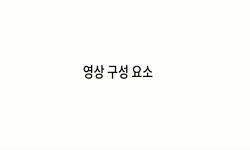The purpose of this study was to identify whether shoulder complex exercise program with visual feedback could improve the shoulder muscular strength and postural alignment in adolescents with shoulder asymmetry. Twenty eight subjects were recruited...
http://chineseinput.net/에서 pinyin(병음)방식으로 중국어를 변환할 수 있습니다.
변환된 중국어를 복사하여 사용하시면 됩니다.
- 中文 을 입력하시려면 zhongwen을 입력하시고 space를누르시면됩니다.
- 北京 을 입력하시려면 beijing을 입력하시고 space를 누르시면 됩니다.
시각적 피드백을 병행한 어깨복합운동프로그램이 어깨비대칭 청년들의 어깨 근력과 정렬에 미치는 영향 = Effects of Shoulder Complex Exercise Program with Visual Feedback on Muscles Strength and Alignment of Shoulders in Adolescents with Shoulder Asymmetry
한글로보기https://www.riss.kr/link?id=A103732860
-
저자
강순희, 강은지, 목미경, 박지연, 손혜림, 연우정 (물리치료학과)
- 발행기관
- 학술지명
- 권호사항
-
발행연도
2016
-
작성언어
Korean
- 주제어
-
자료형태
학술저널
-
수록면
473-487(15쪽)
- 제공처
- 소장기관
- ※ 대학의 dCollection(지식정보 디지털 유통체계)을 통하여 작성된 목록정보입니다.
-
0
상세조회 -
0
다운로드
부가정보
다국어 초록 (Multilingual Abstract)
The purpose of this study was to identify whether shoulder complex exercise program with visual feedback
could improve the shoulder muscular strength and postural alignment in adolescents with shoulder asymmetry.
Twenty eight subjects were recruited from the K university and divided into three groups: experimental 1,
2group(Each n=10) and control group(n=8). For 4 weeks, the experimental group 1 performed shoulder muscle
complex exercise program and the experimental group 2 performed shoulder complex exercise program with
visual feedback. The control group did not perform exercises. The shoulder muscle strength and difference
between the height of left and right shoulders were assessed before, after training using the hand-held
dynamometer and Global Posture System. Subordination variables, general characteristics analysis, χ² test and
Kruskal Wallis H test were conducted to evaluate differences between groups and training before, after changes
were checked Wilcoxon signed rank test with using the PASW 18.0 statistical program.
The results of the study were as follows. 1) Both the experimental 1, 2group showed improvements in
muscle strength of several muscles following training (p<.01). The control group showed significant reduction in
the left posterior deltoid (p<.05), and did not show significant changes in examining other muscles (p>.05). And
there were differences among three groups in shoulder muscle strength (p<.001). Muscle strength changes in
several muscles were greater in the experimental 1, 2group compared with the control group (p<.001). Muscle
strength changes in the several muscles were greater in the experimental group 2 compared with the
experimental group 1 (p<.001) 2) Both the experimental 1, 2group showed significant decreases in the difference
between the left and right shoulder heights following training (p<.01). The control group did not show change
(p>.05). Changes in the difference between the left and right shoulder heights were greater in the experimental
1, 2group compared with the control group (p<.001).
동일학술지(권/호) 다른 논문
-
- 한국교통대학교
- 김상혁
- 2016
-
马字成语의 문화적 상징과 含意고찰 --- 四字成語故事를 중심으로 ---
- 한국교통대학교
- 유태규
- 2016
-
- 한국교통대학교
- 윤현숙
- 2016
-
- 한국교통대학교
- 김진호
- 2016




 RISS
RISS



